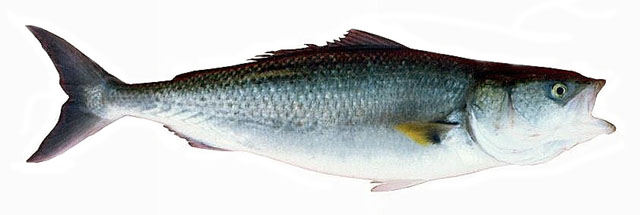| Arripidae (Australian salmon) |
| 96 cm SL (male/unsexed); max.weight: 11 kg; max. reported age: 9 years |
|
benthopelagic; brackish; marine; depth range 0 - 80 m |
| Eastern Indian Ocean: southern Australia from Western Australia to Victoria and Tasmania. |
|
Dorsal spines (total): 9-9; Dorsal soft rays (total): 15-19; Anal spines: 3-3; Anal soft rays: 9-10; Vertebrae: 25-25. Greyish or greenish black to steel-blue with yellow to blackish spots dorsally; silvery white ventrally. Pectoral fin pale yellowish, other fins translucent. Juveniles similar but with a greater number of spots and with dark fin margins. Length of upper lobe of caudal fin <29.9% (Ref. 9701). |
| Inhabit continental shelf waters including estuaries, bays and inlets (Ref. 6390). They school in shallow, open coastal waters, and can move over reefs in depths just sufficient to cover their bodies (Ref. 6390). Juveniles are found over soft substrates in shallow and sheltered coastal waters (Ref. 6390). They are often found over seagrass (e.g. Posidonia species) beds and in mangrove-lined (Avicennia species) creeks (Ref. 27967). Larger fish move into exposed, coastal waters, such as around rocky headlands, near reefs and the surf zone (Ref. 6390). Feeds on fishes (Ref. 2156). Minimum depth reported taken from Ref. 57178. |
|
Not Evaluated (N.E.) Ref. (130435)
|
| harmless |
Source and more info: www.fishbase.org. For personal, classroom, and other internal use only. Not for publication.
